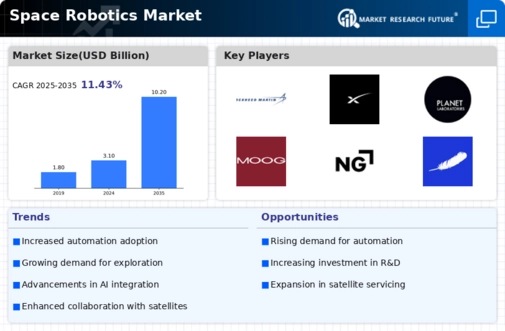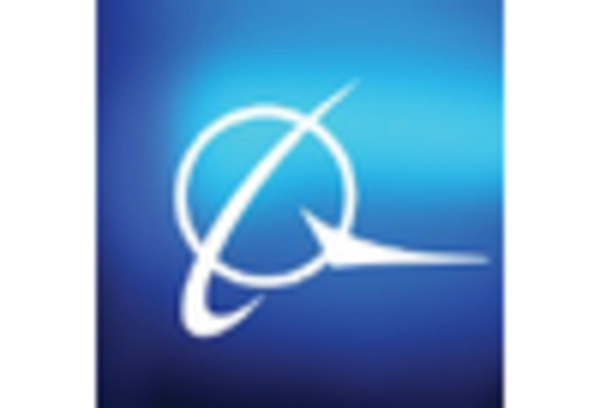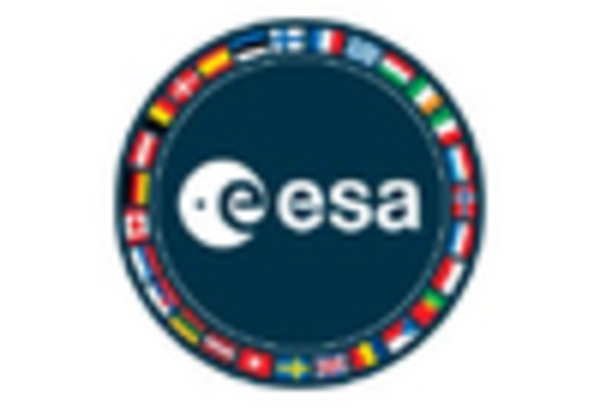Rising Interest in Space Tourism
The rising interest in space tourism is emerging as a novel driver for the Space Robotics Market. As private companies like SpaceX and Blue Origin develop commercial space travel options, the need for robotic systems to ensure safety and enhance the passenger experience becomes increasingly relevant. Robotic technologies can assist in pre-launch preparations, in-flight operations, and post-mission recovery, thereby improving overall mission efficiency. The space tourism market is projected to reach 3 billion USD by 2030, indicating a lucrative opportunity for robotic applications. This burgeoning sector is likely to stimulate innovation and investment in the Space Robotics Market, as companies strive to meet the demands of this new frontier.
Growing Demand for Satellite Services
The increasing reliance on satellite services for communication, navigation, and Earth observation is driving the Space Robotics Market. As nations and private entities expand their satellite constellations, the need for robotic systems to deploy, maintain, and service these satellites becomes paramount. The market for satellite services is projected to reach approximately 300 billion USD by 2025, indicating a robust growth trajectory. This demand necessitates advanced robotic solutions capable of performing complex tasks in space, such as satellite repairs and upgrades. Consequently, the Space Robotics Market is likely to experience significant growth as companies invest in innovative robotic technologies to meet these emerging needs.
Technological Advancements in Robotics
Technological advancements in robotics, including artificial intelligence, machine learning, and advanced materials, are propelling the Space Robotics Market forward. These innovations enable the development of more sophisticated robotic systems capable of performing intricate tasks autonomously in harsh space environments. For example, the integration of AI allows robots to make real-time decisions, enhancing their operational capabilities. The market for AI in robotics is expected to grow significantly, potentially reaching 20 billion USD by 2026. As these technologies evolve, they will likely enhance the functionality and reliability of robotic systems, thereby driving demand within the Space Robotics Market.
Expansion of Space Exploration Missions
The ongoing expansion of space exploration missions, including crewed and uncrewed missions to the Moon, Mars, and beyond, is a key driver for the Space Robotics Market. Agencies like NASA and ESA are increasingly incorporating robotic systems into their mission architectures to enhance operational efficiency and safety. For instance, NASA's Artemis program aims to return humans to the Moon by 2024, with robotic systems playing a crucial role in habitat construction and resource extraction. The estimated budget for Artemis is around 35 billion USD, highlighting the financial commitment to integrating robotics into space exploration. This trend suggests a growing market for robotic technologies that can support diverse exploration objectives.
Increased Collaboration Between Public and Private Sectors
The increasing collaboration between public and private sectors is fostering growth in the Space Robotics Market. Governments are recognizing the value of partnering with private companies to leverage their expertise and innovation in robotics. Initiatives such as NASA's Commercial Crew Program exemplify this trend, where private firms are contracted to develop and operate crewed spacecraft. This collaboration not only accelerates technological advancements but also reduces costs associated with space missions. The financial implications are substantial, with billions of dollars being allocated to private contracts, thereby stimulating the Space Robotics Market as companies seek to fulfill these contracts with cutting-edge robotic solutions.


















Leave a Comment